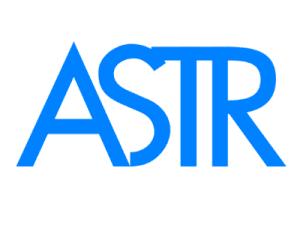Occipital Neuralgia: Symptoms, Causes, Healing Cycle & Natural Treatment
Occipital Neuralgia: Symptoms, Causes, Healing Cycle & Natural Treatment
Occipital neuralgia pain results from issues affecting the third occipital nerve, lesser occipital nerve, and greater occipital nerve along their anatomical pathways. This unique headache type is associated with chronic pain in the back of the head, upper neck, and area behind the ears. The pain in the neck may also extend to the cranium. Subsequent sections of this article outline the causes, risk factors, and treatments for occipital neuralgia.
Definition of Occipital Neuralgia
Occipital neuralgia is a sudden, intense painful condition that affects the distribution of one or more of three nerves:
- Lesser occipital nerve
- Greater occipital nerve
- Third occipital nerve
This sharp, piercing pain can last from seconds to minutes and is due to problems with the nerves mentioned above. The average age at diagnosis for occipital neuralgia is 54.1 years, and it accounts for approximately 8.3% of total facial pain cases [1].
Symptoms of Occipital Neuralgia
The following are the clinical features of occipital neuralgia [2]:
- Sharp or shooting pain in the neck area that may spread to the cranium.
- Persistent and sudden pain may be felt in the area around the eyes.
- Cervical sympathetic symptoms.
- Eye pain.
- Vision disturbances.
- Dizziness.
- Tinnitus (ringing in the ears).
- Nausea.
- Nasal congestion.
- Decreased or altered sensation.
- Pain in the occipital region can be on one or both sides and may radiate to the top of the scalp.
- Tenderness along the pathway of the lesser and greater occipital nerves during physical examination.
Causes and Risk Factors of Occipital Neuralgia
Around 90% of occipital neuralgia cases are due to problems with the greater occipital nerve, while the remaining 10% are related to the lesser occipital nerve. Primary causes involve herpes zoster infection and demyelinating lesions. Compression of the lesser occipital nerve, greater occipital nerve, and third occipital nerve at various points along their anatomical paths can lead to occipital neuralgia [1].
Additional causes and risk factors for occipital neuralgia include:
- Poor posture while driving or working on a computer.
- Whiplash injuries.
- Herniated intervertebral discs.
- Osteoarthritis.
- Muscle tightness.
- Muscle strain from poor posture.
- Other conditions, such as gout and diabetes mellitus.
通常の治癒サイクル
Before discussing treatment options for occipital neuralgia, it is important to understand the normal healing cycle. This cycle has three key stages: inflammation, proliferation, and maturation, each of which is explained below [3].
炎症段階
The signs of inflammation include redness, pain, warmth, swelling, and loss of function in the affected area. During this stage, the immune response is activated to eliminate disease-causing pathogens.
増殖段階
This stage is marked by the formation of scar tissue in the wound area. During the proliferation stage, fibroblasts produce collagen, new blood vessels form, and granulation tissue is generated. Excessive scar tissue formation can result in myofascial trigger points and fascial restrictions.
成熟段階
The maturation stage involves wound healing and the resolution of the healing process. During this phase, disease-causing agents and other inflammatory products are cleared from the affected site. In chronic inflammation, which persists longer than acute inflammation, tissues may oscillate between the inflammatory and proliferative phases, failing to progress to the maturation stage.
Ineffective Treatments for Occipital Neuralgia
People with occipital neuralgia might try various home remedies to relieve symptoms, but these usually only provide short-term relief and may worsen inflammation and proliferation processes. Such remedies include:
- Massage therapy.
- Foam roller massage.
- Heat and ice therapy.
- Electrical stimulation of the affected area.
- Strength exercises during the inflammatory phase.
- Stretching.
Effective Treatments for Occipital Neuralgia
Effective treatment strategies for occipital neuralgia include:
- Improving posture and core stabilization.
- Engaging in pain-free activities and neck exercises.
- Addressing the inflammation stage with adequate rest and specific therapies.
- The MagnaHeal device, which uses magnetic therapy to reduce inflammation. It is made from a rare earth magnet (neodymium) coated with anti-inflammatory substances. MagnaHeal 1 is suited for acute inflammation, while MagnaHeal 2, with a longer magnetic force, is used for chronic inflammation [4].
- Following an anti-inflammatory diet, which includes herbs, spices, monounsaturated fatty acids (MUFA), polyunsaturated fatty acids (PUFA), fruits, and legumes, to help manage inflammation and reduce symptoms [5].
- Using the AskASTR program to identify nutrient deficiencies and obtain information on supplementation.
- Addressing the proliferation stage with specific tools: A1 tool for superficial fascia and aponeurotic restrictions, A3 tool for superficial scar tissue and muscle trigger points, and A5 tool for deeper tissue issues.
結論
Occipital neuralgia results from infections like herpes zoster, demyelinating lesions, and nerve compression along their anatomical pathways. While some conventional remedies, such as heat and ice therapy, electrical stimulation, stretching, muscle strengthening, and massage therapy, may offer temporary relief, more effective treatments focus on resolving the inflammatory and proliferation stages of healing. This includes using the MagnaHeal device, following an anti-inflammatory diet, and utilizing specialized tools such as the A1, A3, and A5.

